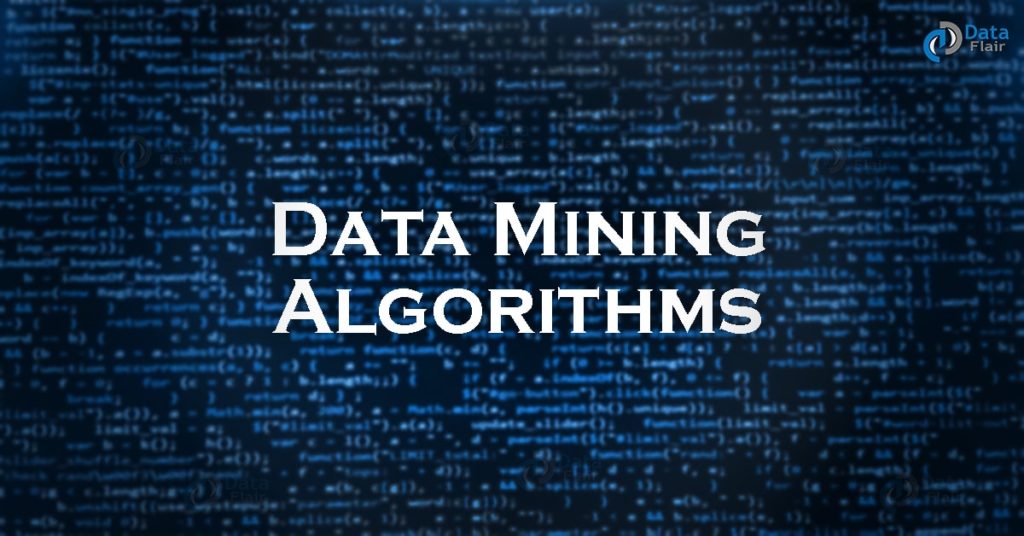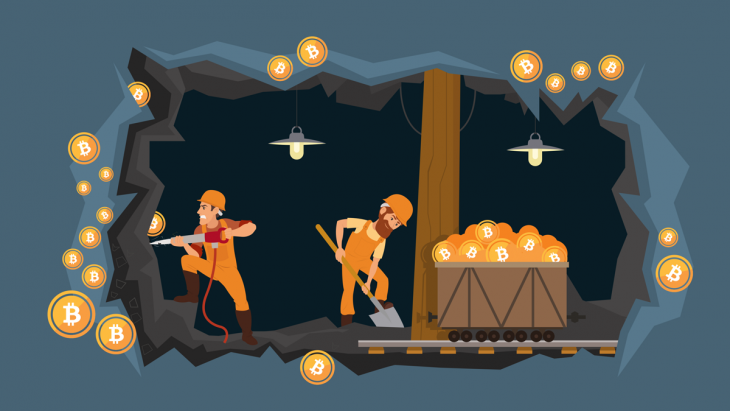What is cryptocurrency mining – We consider the key issues related to mining – that is in simple words, how cryptocurrency mining works, what are the ways of mining virtual coins, what is required for this.
Mining is the process of generating new blocks of transactions in the blockchain network, in which the power of computing equipment is used. The creation of each new block is accompanied by the emission of a certain number of cryptomonet distributed among users, the power of which was used in the generation. In fact, new coins are a fee for miners that support the functioning of the blockchain network, because, without the formation of new transaction blocks, the platforms will stop working.
In today’s review, we take a closer look at what cryptocurrency mining is, on what principles it is built and what types it divides. Also, find out what it takes to start mining cryptomonet.
What is cryptocurrency mining in simple words?

The essence of mining is that computing equipment is engaged in the selection of a unique digital signature ( hash ), which closes the block. All signatures are unique and cannot be repeated. Elements of the network follow each other in strict sequence. None of the blocks can not be copied or deleted.
Unknowing people often have a logical question – what is the meaning of mining cryptocurrency. The fact is that the blockchain platform in cryptocurrency, above all, is a decentralized payment system, within which the digital currency of the same name “walks”. To allow people to transfer crypts to each other, transactions are grouped into blocks, each of which has its own unique key or signature. The selection of this signature, as we have said, is done by miners (or rather, their equipment). After each new block is closed, a certain amount of cryptocurrency is emitted. This amount is distributed among all participants who were busy creating the next network element. The amount of the payment depends on the user’s contribution to the formation of the block. That is, the higher the power of its equipment, the greater the reward.
Miners form blocks and keep the system working (that is, they serve it), and for this, respectively, receive an award. Only instead of the usual fiatnyh money the user receives a certain amount of cryptomonet. A person can exchange them for fiduciary money (dollars, euros, rubles) or buy some kind of goods for them.
In fact, miners are engaged in the formation of new cryptomonet by searching for hash, like miners who are looking for gold in the mines. Thus, they perform 2 tasks at once:
- Form new blocks of transactions, maintaining the functioning of the network.
- Provide continuous emission of new crypomonet, increasing their number in the market.
If you talk in more detail about how the mining of cryptocurrency works, then here you should consider several important aspects:
- Emission of many popular koin (Bitcoin, Lightcoin) is limited.This restriction is written in the system code itself. A total of 21 million BTC and 84 million LTC can enter the market, respectively. Restricted emissions is one of the tools to increase the value of an electronic asset. If we take the same Dogykoins, the issue of which is not limited, we will see the following picture: as of November 2, 2018, 116.8 billion coins were issued, while the price of one coin is less than $ 0.004. Of course, Dogikoins are still actively used (due to the speed of transactions, low commissions and good scalability), but given the huge amount of currency in the market, its value is unlikely to ever reach a more or less decent value. At the same time, it is possible to distinguish successful exceptions (for example, Ethereum). At the time of writing of article 1, ETH costs 201.2 USD, while almost 103 million coins have already been issued. Although recently there have been rumors Acne Buterin intends to limit emissions. Such a move can significantly increase the value of an asset in the market.
- Transaction blocks are formed at regular intervals. This parameter is also intended to regulate the release of new Coins (even if the issue is not limited). For example, one BTC block is formed in about 10 minutes, an LTC network element in 2 minutes 40 seconds. The Ethereum network unit is one of the champions; its generation takes a little more than 14 seconds. This parameter is peculiar to constancy. Only minor up or down deviations are allowed.
- Mining of any cryptocurrency has its own complexity. This nuance follows from the previous one. This parameter saves the specified block generation time regardless of how many people are engaged in mining. The more people connected to the mining, the higher the network capacity. Therefore, in order to maintain the established time interval, the complexity of mining rises. If there is an outflow of miners, complexity, on the contrary, reduces. This parameter is adjusted with a certain frequency. For example, in the Bitcoin network, recalculation occurs every 2016 blocks (once every 2 weeks). The complexity indicator is perhaps the most important parameter for any miner. It allows you to understand how much profit will bring equipment specific power. For calculating profitability all miners use special services (for example, nicehash.com/profitability-calculator). Such platforms allow not only to estimate the profitability of production, but also to calculate the payback of equipment.
- The unit reward is gradually reduced. This is another emission control tool. On the same Bitcoin network, at the moment, 12.5 coins are issued. With an interval of 4 years, the remuneration decreases exactly 2 times. This principle of operation of cryptocurrency sites has both positive and negative qualities. On the one hand, a gradual decrease in the reward makes the asset more valuable, but on the other hand, sooner or later this will lead to the fact that mining will become unprofitable, and people will stop doing it.
Speaking of mining, it is impossible not to mention the two consensus algorithms used:
- Proof-of-Work (PoW) or proof of work performed. This protocol is still more common. On its basis, payments are made in the Bitcoin, Litcoin, Monero, Zikesh networks and at many other sites. The principle of PoW is extremely simple – the more useful work the miner performed (that is, the more power he gave for opening the unit), the more reward he received.
- Proof-of-Stake (PoS) or proof of share. Here, the amount of the payment will depend not on the power of the equipment, but on what proportion of the total number of cryptomonet the person owns. For example, you have 100 units of some cryptocurrency. Its total volume is 1000 units, which means you own a share of 10%. The greater the balance, the greater the chance of getting a reward. The PoS protocol is somewhat similar to a bank deposit, in which profit depends on the amount and interest rate (although here the first one defines the second). This principle is a prime example of when money makes money. Holders of large shares only confirm transactions and receive their interest for it. No special equipment is used. So far, the protocol Proof-of-Stake is gaining popularity. It is used in networks such as Peercoin, Nxt, ShadowCash.
Well, we figured out what the principle of mining cryptocurrency and what are its key nuances.
What algorithms are mining cryptocurrency mining?

Each cryptocurrency network uses its own encryption algorithm, which operates mining equipment. Today, there are many algorithms and Coin, which are mined by him. We consider the most popular examples:
- SHA256 – it is on this algorithm that Bitcoin is mined. Also, this type of encryption is used in networks Bitcoin Cash, DigiByte, Peercoin, Namecoin.
- Scrypt is an encryption type used in Litecoin, Dogecoin, Syscoin, BelaCoin, Potcoin, DNotes, ViaCoin networks.
- Ethash – Ethereum and Ethereum Classic are extracted on this algorithm.
- X11 – used on the Dash network. Also, PinkCoin cryptocurrency works on its basis.
- Decred is a modified version of the Blake256 algorithm. Used when mining coins Decred. Often, using the Claymore’s Dual Miner program, Decred cryptocurrency is mined in parallel with Ethereum (the so-called dual mining).
- CryptoNight is a type of cryptographic encryption used in the extraction of assets such as Monero and ByteCoin.
- Equihash – underlies the cryptocurrency Zcash, which today is especially popular among people involved in mining on video cards.
- X11Gost is the algorithm underlying the Sibcoin (or Siberian Chervonets) cryptocurrency. This type of encryption is an offshoot of the original X11. Curiously, the hash function of this algorithm corresponds to the Russian GOST R 34.11-2012.
So, we have considered the most popular algorithms and cryptocurrencies mined on them. Now let’s talk about the existing methods of mining virtual coins.
types of mining cryptocurrency

Globally, mining cryptocurrency is divided into 2 types:
- Traditional – extraction of cryptoactive assets with the help of the capacity of its equipment. This method is considered to be the most profitable, but too costly (to get a serious profit, you need to buy equipment for several thousand dollars). In addition, it is necessary to furnish the room in advance (there should be temperature control, air ventilation), redo the wiring (Soviet wires are unlikely to withstand the load), pay large bills for the light monthly, constantly monitor the equipment and, if anything, repair it. or replacement. The main risk of traditional mining is that the mined asset may depreciate, and your thousands of investments will be thrown to the wind.
- Cloudy– implies a lease of the capacity of a large company. You buy a tariff plan for a certain period (six months, a year, 5 years), third-party equipment extracts coins, after which you are charged a commission corresponding to the contract purchased. In cloud mining, a person does not encounter problems that are typical of traditional mining: no need to spend money on the purchase and maintenance of equipment, arrangement of rooms, payment for light. All these concerns are taken by the company providing the service. At the same time, good tariff plans, which give a normal income, are not cheap (about a thousand dollars), while you are not immune from the fact that the cloud mining service closes suddenly. And let’s not forget about the scammers, of which more than enough in this area. Therefore, before choosing a site, it is necessary to get acquainted with the information about it, read reviews and so on. Today, good platforms cloud mining are such resources: genesis-mining.ru, for-biz.com, flymining.cloud.
As for traditional mining, it is also divided into subspecies, which depend on the type of equipment used:
- Extraction of cryptocurrency on a computer processor. We have indicated this method simply because it exists, but today almost no one uses it. The thing is that the complexity of popular crypto networks has reached too high a mark, and even modern advanced chips will not provide you with a normal profit. You can, of course, “play” in mining, mining on the processor Monero. But this step is recommended to be done only for informational purposes. Wearing an expensive processor for this is not worth it.
- Mining on video cards. This is a more serious way that can provide a good monthly income. Today, on video cards, minites are mainly Ethereum, Ethereum Classic and Zikesh. For the gradual accumulation of coins for the future, you can use 1-2 Radeon or GeForce TOP cards. In order for profit to be noticeable, it is necessary to equip farms of 6, 8 or 10 boards. By the way, farm mining is not so risky. Even if the crypt collapses, you can sell the existing cards.
- Mining cryptocurrency using ASIC miners. This method will also require you to tangible costs, but in the end you will receive specialized equipment, sharpened exclusively for mining. There are quite a few ASIC models on the market today, among which are Bitmain Antminer S9 (for Bitcoin mining), Antminer D3 (for Desch cryptocurrency), Antminer L3 ++ (for Lightcoin and other cryptocurrencies on the Scrypt algorithm ), Antminer E3 (for Ethereum) . Ashiki initially have a high hashrate, so they can give a solid income. But if the cryptocurrency depreciates, you will not be able to sell such equipment (it will simply become useless to no one).
It is necessary to mention that with the traditional approach it will be possible to extract cryptocurrency in 2 ways:
- Through mining pools – special sites that combine the power of several users to open the block. The user will receive an award in any case, but its size will depend directly on the capacity provided. From good pools, you can select sites such as f2pool.com, minergate.com, miningpoolhub.com.
- Solo mining – an approach in which the user tries to close the block only on his own. If his equipment succeeds, the whole reward for the unit goes to one person; if not, the miner receives nothing.
Separately, it is worth to highlight another 2 types of mining, which are quite rare:
- Browser – involves the extraction of Coins through the execution of a special jascript-script. The browser mining service is provided by such services as browsermine.com, web-miner.ru. The yield of this method is low. Moreover, as in the case with cloudy prey, it is likely to run into scams.
- Hidden – the extraction of the crypt due to the “iron” of someone else’s computer. This is made possible by infecting a PC with a special virus. A malicious program is recorded on an alien device in different ways: along with applications on file sharing sites, as a result of opening a viral advertising page or even manually (by copying the infected file to the hard disk). Serious viruses are almost impossible to track or delete. But finding them on the Internet is also impossible. As a rule, each hacker creates such software independently.
What do you need to do to start mining?

To start mining cryptocurrency on your own, you need to follow a few steps:
- Choose a cryptomonet for mining. This step will determine the following. It is not necessary to choose coins that are expensive today. You can focus on cheap cryptoactive with a good prospect, though for this you will have to study a lot of analytical reports.
- Purchase equipment for mining. Whether it is a farm of video cards or asiki, depends directly on the coin that you are going to mine. If you plan to do cloud mining, then prepare the minimum capital for the start and select the appropriate service (we have given the examples above).
- Create a wallet in which you will store the extracted currency. You can choose from several types of storage: software (Bitcoin and Litecoin Core, Electrum, Mist, JAXX), online (blockchain.com, coin.space), mobile (Exodus, Coinomi), exchange (Exmo, Livecoin), paper, hardware (Trezor, Ledger Nano S).
- Install and configure a program for mining. Applications such as Claymore’s Dual Miner, NiceHashMiner, CGMINER, Guiminer, CudaMiner are available.
- Select a pool for mining and register on it (we also gave examples of services above).
When all the preliminary steps are completed, you can proceed to the extraction.
Well, here we have learned what mining is, what its meaning is, what types exist and what needs to be done to start self-production of cryptoactive assets. Of course, over time, this type of activity will lose its relevance, as it will become unprofitable. But while the extraction of cryptocurrency is still able to bring a good income, so you can do it. However, remember that modern mining requires significant financial investments, and no one will insure you against risks. Therefore, carefully weigh the pros and cons and make your choice.















